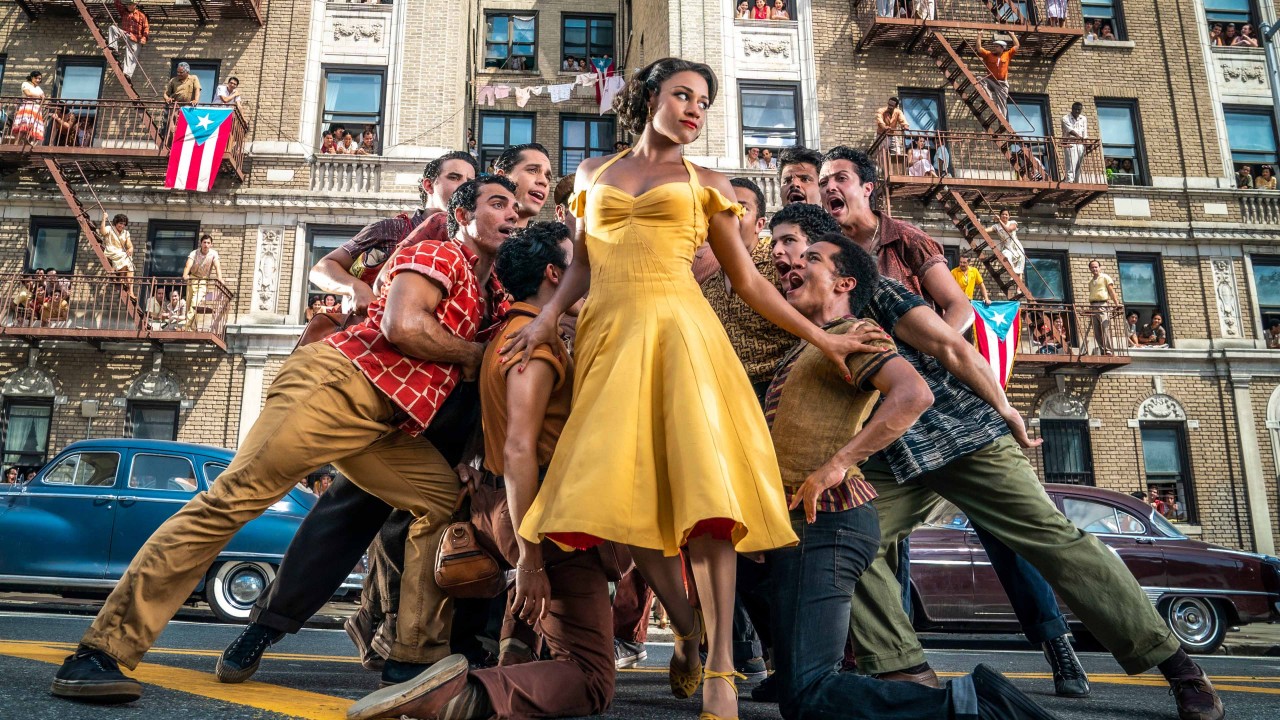At first, I was very nervous to watch this movie. West Side Story is one of the most beloved musicals in theater history. So the stakes for this remake were high. In addition, considering the racist overtones of the depiction of Latine communities in the famous 1961 film directed by Jerome Robbins and Robert Wise, I was concerned with how the movie might handle that topic in 2021. Nevertheless, I was pleasantly surprised.
The movie still follows the forbidden love story of Tony (Ansel Elgort) and María (Rachel Zegler), whose love is impossible because their cultural backgrounds and social circles are strongly linked to two opposing gangs: the Jets and the Sharks. Despite my initial concerns, the movie was wonderful. The performances, which also include Ariana DeBose and David Alvarez, were excellent, and Rachel Zegler’s feature acting debut was an astonishing tour de force of her skills as a rising new actress.
In addition, Gustavo Dudamel’s impeccable conduction of Bernstein’s music, the jaw-dropping composition of some of the shots (like the one overlooking the rumble), the narrative bits hidden in the costume design, and the beautiful and striking color pallet contrasts make this movie a must-watch this holiday season.
The movie also overcomes one of my main issues of musical adaptations in film. Pacing. Usually, the abundance of songs often hampers the flow of the movie. However, this wasn’t the case with 2021’s West Side Story. The songs contained narrative elements that kept the movie moving, and they’re so beautifully performed, you might forget you’re even in the theater. The performances of the quintet reprise of “Tonight,” as well as the heartbreaking duet, “A Boy Like That/ I Have a Love,” are just two notable examples.
Spielberg’s rendition of West Side Story stands out by adding complexity and realism to the existing classic. He and screenwriter Tony Kushner add more context to what was happening in New York at the time by framing the story through the lens of urban displacement, gentrification, and the struggles of the Puerto Rican diaspora. This adds a more nuanced understanding of the hostilities between the Jets and Sharks.
In previous iterations, the driving conflict was simply reduced to “gangs being gangs.” Here, the added layers of economic anxiety to the Jets and an emphasis on questions of assimilation and the hardships of immigrant life in the Sharks provide deep stakes for most characters in the film. Combined with the suffering both communities endured because of the city’s efforts to remove them from their home, the film is all the more relevant to the contemporary world, in which audiences are asking themselves their own questions about displacement, identity, and discrimination.
Latine representation in the movie also marks a drastic improvement from the 1961 film. Rather than brown face and caricaturesque portrayals, Latine actors bring to life multiple, and very real, facets of Caribbean culture, as well as a believable range of approaches to life in America. Some characters, like Anita (DeBose), try to assimilate, always encouraging María and Bernardo (Alvarez) to speak in English at home. Speaking of Bernardo, he has his eyes set on returning home to the island.
Advertisement
Something that stood out to me was the usage of Spanglish and Spanish in the movie. Many other movies, even ones with wonderful Latine representation like Pixar’s Coco, tend to use the Spanish language at random in just a few words for every other sentence or so. Here, characters seamlessly flow between Spanish, Spanglish, and English, and the usage of language itself becomes a narrative element that portrays the discrimination Puerto Ricans faced, especially in the scene toward the end of the movie when Anita and María are questioned by the police lieutenant (Corey Stoll).
The movie beautifully juxtaposes this added realism with the expectedly bombastic musical elements, which include large-scale choreographed numbers that usually elevate the film to new heights. Yet, they also further highlight some of the narrative issues embedded in the story: mainly the romance between the protagonists, Tony and María. At times it was frustrating to watch such a rushed and irrational romance in such a realistic (or quasi-realistic, at least) setting. It made the tragedy and naïveté of Tony and María seem, at times, like foolishness and selfishness.
Aside from these narrative issues, West Side Story (2021) is a wonderful re-telling of a wonderful tale with added depth and astonishing production and performances that is a must-watch for cinema lovers.
West Side Story (2021) is now playing in theaters. Watch the trailer here.
Advertisement
Advertisement
